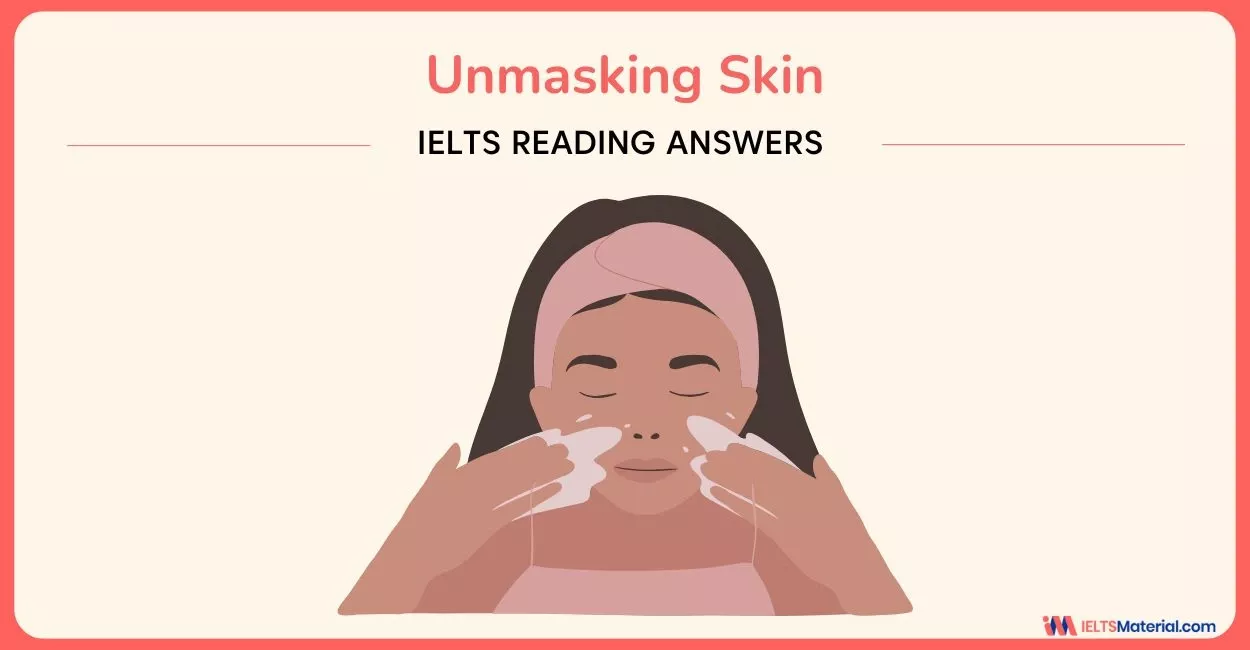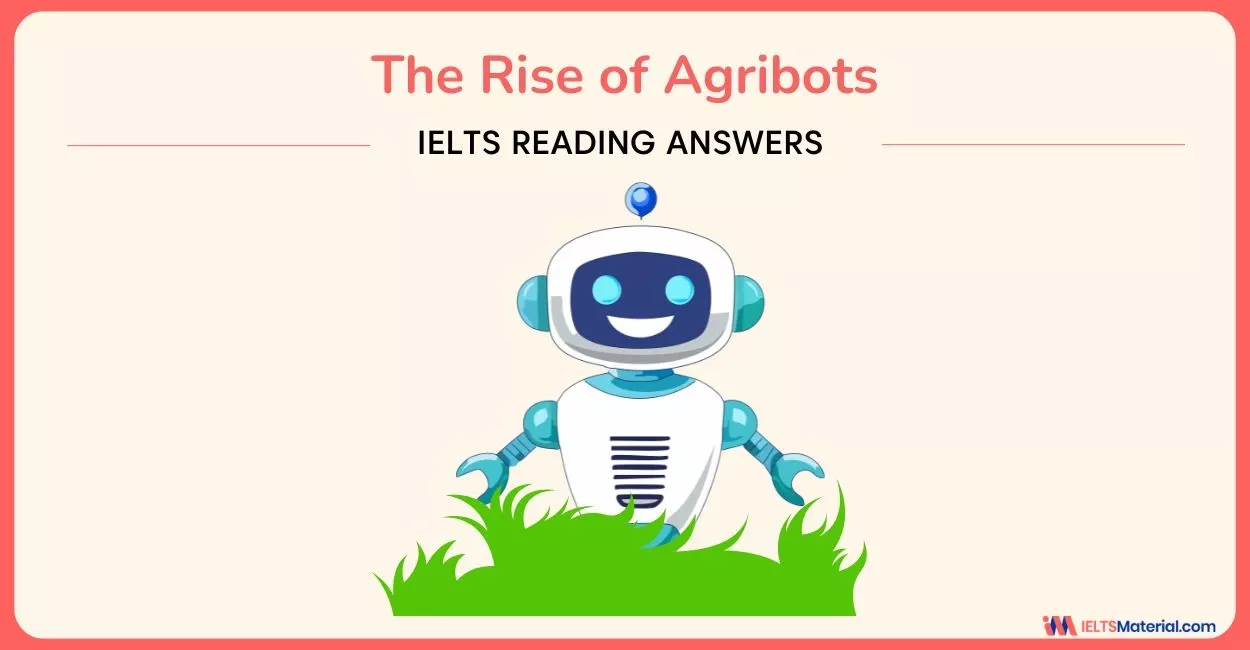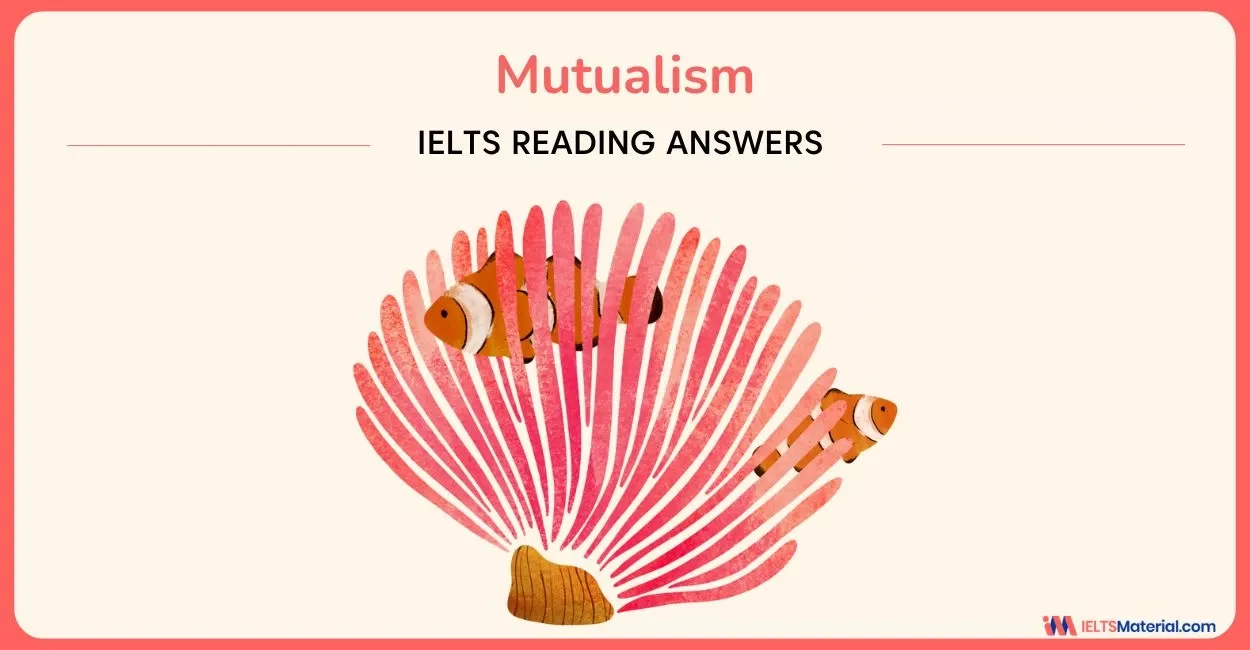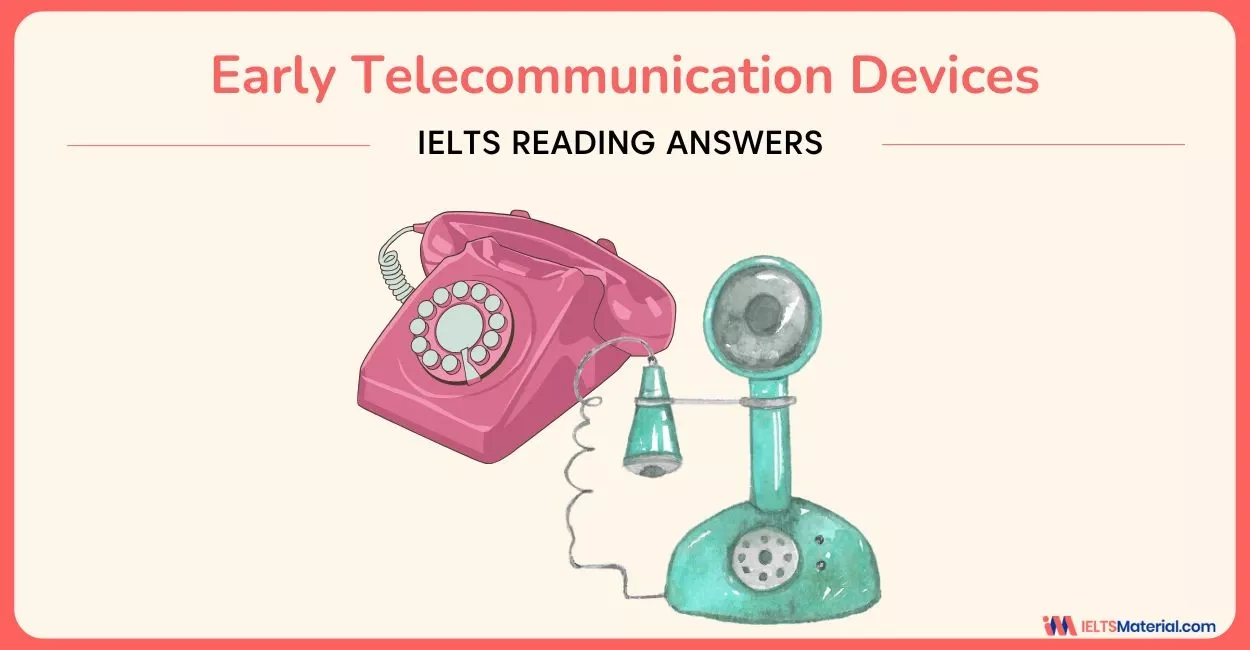Early Telecommunication Devices - IELTS Reading Answers
11 min read
Updated On
-
Copy link
Boost your IELTS reading band score to 8 and above by using the ‘Early Telecommunication Devices’ IELTS reading passage and its answer key. Also, learn to deal with different IELTS reading questions with the tips here and refine your reading strategy.
Table of Contents
- Passage for Early Telecommunication Devices IELTS Reading Answers
- Questions for Early Telecommunication Devices Reading Answers
- Answers and Explanations of Early Telecommunication Devices IELTS Reading Passage
- Tips for Answering the Question Types in the Early Telecommunication Devices Reading Passage

Limited-Time Offer : Access a FREE 10-Day IELTS Study Plan!
You can achieve a top score in the Reading Module with consistent and diligent practice. To score well, you must understand how to approach and answer the different question types in the Reading module. Early Telecommunication Devices is a real Reading test passage that appeared in the IELTS.By solving and reviewing the sample reading questions provided with this passage, you can ensure that your reading skills are up to the mark.
Take the practice test Early Telecommunication Devices below and try more IELTS reading practice tests to improve your comprehension skill for the actual exam.
Passage for Early Telecommunication Devices IELTS Reading Answers
Now go through the passage for ‘Early Telecommunication Devices’ Reading Answers given below, and be prepared to solve similar IELTS Reading topics for General and Academic for the reading section.
You should spend about 20 minutes on Questions 1-14, which are based on the Reading Passage below.
Early Telecommunication Devices
A Although it is hardly used anymore, the telegraph is familiar to most people. This early telecommunication devices is credited, as any school student knows, to Samuel Morse, who, in 1844 made the first long-distance electronic communication via his invention, the Morse's telegraph. What is not so commonly known is that Morse's was not the only telegraph nor he the only such inventor at this time. A rival system, developed by William Cook and Charles Wheatstone, was patented in England in 1845 and was subsequently adopted for use by British rail companies to enable speedy communication between rail stations.
B However, the Cooke-Wheatstone telegraph, which used six wires and a fragile receiver requiring five magnetic needles, proved to the awkward to use, difficult to transport and expensive to built. Morse's version used one wire and a receiver of a simpler and stronger design. This is, no doubt, why it became the favored telegraph in many parts of the world, especially the United States, which built a telegraph line along railway tracks crossing the North American continent, linking eastern cities with western frontiers.
C Morse chose the Magnetic Telegraph Company to handle the patents for his telegraph technology, and within seven years of the appearance of his invention, the company had licensed use of the telegraph to more than 50 companies across the US. In 1851, twelve of this companies come together to form the Western Union Company. By 1866, Western Union had grown to include more than 4000 telegraph offices, almost all in rail stations.
D Another early telecommunications device is still very much with us the telephone. Although the telephone is popularly thought to be the brainchild of one man, Alexander Graham Bell, this is not the while truth. Phillip Reis, a schoolteacher in Germany, invented a device in 1861 that he labelled a telephone. Reis’s invention was limited to transmitting musical tones, however, and could not send the sound of the human voice across the wire.
E While Reis was working on his invention, Bell and another man, Elisha Gray, were also working toward the invention of the telephone, though by an indirect route. Both were, in fact, seeking ways of allowing multiple telegraph signals to travel along the some telegraph line - a system known as a harmonic telegraph. Bell worked in Boston while Gray was based in Chicago, and the tow were rivals in their area of research. for both inventors, the perfection of the harmonic telegraph proved too difficult and both, separately but at around the some time, changed plans and started on the development of a telephone. Most interesting of all is the fact that both men applied for a patent to the US patent office for their respective telephones on the same day, 14 February 1876. Bell was lucky enough to have arrived a few hours earlier than Gray and so it was Bell whose name was to be forever associated with the telephone. The harmonic telegraph, incidentally, was perfected by Thomas Edison, best known as the inventor of the light built, in 1881.
F Rights to Bell’s patent (now recognized as the most valuable patent in history of technology) were offered to Western Union for $100000, with the assumption that the giant telegraph company would be enthusiastic about the new technology. But Western Union disliked Bell's design and instead asked Elisha Gray to make refinements to his original telephone design. Bell`s company began to set up its own business and sell telephones, while Western Union, with its somewhat different design, was its competitor.
G Competition between the two continued for about two years, but all the while, the Bell company was mounting a legal challenge to Western Union, claiming it held the only true basic patents for the telephone. it based its claim on the fact that Bell had beaten Gray to the patent office and so should be the sole recognized inventor of the telephone. Eventually, Western Union had to agree with Bell and gave up its telephone rights and patents to the Bell company. The telephone company's entire network of telephones was handed over to the Bell company. As compensation, Western Union was given 20 per cent of revenue from rental of its former equipment, this arrangement was to last until Bell's patents expired. In an effort to fight the power the Bell company enjoyed from exclusive rights to Bell's patents, a small telephone company, Pacific Union, established telephone services in the 1920s and 1930s that it claimed were based on the telephone design of Phillips Reis. They maintained that because Reis's invention pre-dated Bell1s, the Bell, design was not the first of its kind and, therefore, Bell's patents were not valid. Although the court accepted that the company may have been using Reis's technology, it nonetheless held that only Bell's patents could legally by used.
H The Bell company, eventually named American Telephone & Telegraph, thus formed an effective monopoly on telephone services in the United States. The company subsequently grew to such an extent that, a century later, it was the largest privately held enterprise in the world, with more than a million employees controlling communication between more than 100 million telephones. In 1984, American Telephone & Telegraph was found by a US court to be too monopolistic and was ordered to be broken up into several smaller companies.
Glossary
* patent: an official recognition of a person as the inventor of a device
* monopoly: exclusive control of a market
Questions for Early Telecommunication Devices Reading Answers
The passage, Early Telecommunication Devices Reading Answers, consists of 14 questions, which showcase three different IELTS Reading question types. They are:
- IELTS Reading Table Completion (Q. 1-5)
- IELTS Reading Matching Features (Q. 6-10)
- IELTS Reading Short-Answer Type Questions (Q. 11-14)
Questions 1-5
Complete the table below.
Use no more than three words from the reading passage for each answer.
Write your answers in boxes 1-5 on your answer sheet.
|
Year |
Event |
Inventor (s) (by surname) |
|---|---|---|
|
1845 |
Patent of telegraph |
1................ |
|
1851 |
Establishment of 2................ |
|
|
1861 |
Invention of telephone |
3................ |
|
1876 |
Application for patent of 4................ |
Gray |
|
1881 |
Successful development of 5................ |
Edison |
Questions 6-10
Look at the following lists of inventors and companies.
Match each inventor to one of the companies that used his/their technology. Choose E if there is no information in the reading passage.
Write the appropriate letters A-E in boxes 6-10 on your answer sheet.
NB: you may use any letter more than once.
|
Example |
|
|
Inventor |
Answer |
|
Morse |
D |
Companies
A British rail companies
B Pacific Union
C American telephone & telegraph
D Western Union
E No information in reading passage
6 Bell
7 Cooke and Wheatstone
8 Edison
9 Gray
10 Reis
Questions 11-14
Using no more than three words, answer the following questions.
Write your answers in boxes 11-14 on your answer sheet.
11 Name one reason why Cooke and Wheatstone's invention was not as successful as Morse's.
12 In what type of location did Western Union typically offer its telegraph services?
13 What sort of information was Reis's original invention able to send?
14 What device did Alexander Graham Bell try but fail to invent?
Learn quick methods to conquer passages like this within 20 minutes.
Join our FREE IELTS webinars!
Answers and Explanations of Early Telecommunication Devices IELTS Reading Passage
Within this section, you can go through the provided answers, along with their precise locations within the given passage, and the important keywords that will help you find the answers. Check out 'Early Telecommunication Devices' answers and assess your improvement for a high IELTS band score.
| Question Number | Answers | Keywords | Location of Keywords |
|---|---|---|---|
| 1. | Cooke and Wheatstone | William Cook and Charles Wheatstone, patented in England in 1845 | Paragraph A, Lines 7-8 |
| 2. | Western Union Company | In 1851, twelve of these companies come together | Paragraph C, Lines 4-6 |
| 3. | Reis | Phillip Reis, in 1861 that he labelled the telephone | Paragraph D, Lines 4-5 |
| 4. | Telephones | the US patent office for their respective telephones | Paragraph E, Lines 11-12 |
| 5. | Harmonic telegraph | perfected by Thomas Edison, in 1881. | Paragraph E, Last 2 lines |
| 6. | C | the invention of the telephone, a system known as a harmonic telegraph | Paragraph E, Lines 2-5 |
| 7. | A | Patented in England in 1845, British rail companies | Paragraph A, Last 3 lines |
| 8. | E | Edison | Paragraph E, Last 2 lines |
| 9. | D | Western Union, asked Elisha Gray to make refinements | Paragraph F, Lines 4-6 |
| 10. | B | Pacific Union, based on the telephone design of Phillips Reis. | Paragraph G, Lines 13-16 |
| 11. | Awkward to use/ Difficult to transport/ Expensive | Proved to the awkward to use, difficult to transport and expensive to build | Paragraph B, Lines 2-3 |
| 12. | Rail stations | Western Union, telegraph offices, almost all in rail stations. | Paragraph C, Last 2 lines |
| 13. | Musical tones | Reis’s invention, limited to transmitting musical tones, | Paragraph D, Last 2 lines |
| 14. | Harmonic telegraph | Perfection of the harmonic telegraph proved too difficult | Paragraph E, Lines 7-8 |
Learn quick solving tips and reading techniques from experts!
Connect with us through our FREE IELTS online classes!
Tips for Answering the Question Types in the Early Telecommunication Devices Reading Passage
Given below are some IELTS exam preparation tips for band score of 8+ by helping you answer the types of questions in the ‘Early Telecommunication Devices’ Reading Answers.
Table Completion
- Locate the row using the YEAR first: Years (1845, 1851, 1861, etc.) are extremely easy to scan. So, go directly to the sentence that contains the year, read the whole sentence, and extract the answer.
- Copy EXACT words from the passage; no changes allowed: If the passage says “harmonic telegraph”, you must write it exactly. No plural changes, no synonyms, no abbreviations.
- For ‘Inventor (by surname)’, extract ONLY the last name: If text says ‘William Cooke and Charles Wheatstone…’, you write ‘Cooke and Wheatstone’, NOT their first names.
- Identify the correct event that matches the year: Sometimes several events are mentioned near the same date. Check that the event matches both the year, and the column heading (Patent/Invention/Establishment). Do not choose events from nearby sentences unless they clearly fit the year.
- Ignore extra information in the paragraph: Table Completion answers come directly from one phrase. So, avoid examples, explanations, comparisons and side details. Only the event + inventor/thing invented matters.
- Use the grammar check method: Read the table row aloud with your answer. If it sounds grammatically correct, you likely have the right form. If it sounds awkward, you probably missed a small detail.
- If two options appear, choose the more specific one. For example: between ‘telegraph’ and ‘patent of telegraph’, always match the exact context of the table.
- Hyphenated words count as ONE word: This helps stay within the ‘no more than three words’ limit.
Matching Features
- Look for the inventor’s surname FIRST, not the company: Scan names like Bell, Cooke, Wheatstone, Edison, Gray, Reis. Their paragraph usually mentions things like ‘His invention was later used by…’, or ‘Company X adopted his system.’
- Do NOT match based on intuition or real-world knowledge: IELTS passages do not expect you to know history. Only match if the passage explicitly states that the company used the inventor’s technology. If no link is mentioned, the answer is E (No information).
- Watch for indirect connections: Sometimes it’s paraphrased like ‘This device was adopted by…’, ‘The system became standard for…’ or ‘Company X asked him to improve…’. That STILL counts as a match.
- Beware of passages where both inventor and company appear but are unrelated: If both appear in the same paragraph but never connect or if the company is mentioned but no technology link is described, choose E (No information).
- Check if multiple companies used one invention: IELTS passages may mention two companies but only one is the ‘first’, ‘main’, or ‘commercial adopter’. Choose the company explicitly linked.
- If two companies look possible, use keyword logic: Identify invention name, improvement, patent, telegraph/telephone version, etc. Then, match the company associated with that specific version.
- Answers can repeat: A, B, C, D can appear more than once. Never eliminate a company because you have already used it.
Short-Answer Type Questions
- Identify question type first: It tells you exactly what to scan for as each question gives a hidden clue:
- Why? - look for reasons
- Where? - look for locations
- What? - look for objects/information
- Which device? - look for names of inventions
- Scan for keywords, then read one or two sentences ONLY: For example, for Q. 12 (Where did Western Union typically offer its telegraph services?), scan for ‘Western Union’, ‘telegraph offices’, ‘offered services’. Never read the entire paragraph.
- Always choose the shortest phrase that answers the question: If the text says ‘almost all in rail stations in the 1850s’, the correct answer is rail stations, not the whole phrase.
- The answer must come directly from the passage: You should not rely on synonyms. If text says ‘musical tones’, you cannot write sounds’.
- Do not repeat words already in the question: If question asks ‘What information did the device send?’, and the passage says ‘transmitting musical tones’, your answer is musical tones, not ‘transmitting musical tones’.
- Use singular/plural exactly as in the passage: If the passage says tones, your answer must also be tones.
- If the passage provides a list of reasons, choose the one closest to the question. For example, ‘Awkward to use, difficult to transport, expensive…’, any one reason is acceptable, but choose the one first mentioned or most clearly linked.
- If the answer is a device name, scan for capital letters: Device names often appear as telephone, harmonic telegraph, telegraph system or multiplier device. Capitalization helps you find them quickly.
To conclude, we have explored the Early Telecommunication Devices Reading Answers, including specific locations and keywords, to help you in confidently answering those often challenging questions. However, it would be beneficial for you to practice a variety of IELTS Reading practice tests and improve your weak areas on the IELTS Reading exam.
Useful Links:
- New Zealand Seaweed - IELTS Reading Answers
- The Ant and the Mandarin - IELTS Reading Answers With Explanations
- Stars Without The Stripes IELTS Reading Answers
- The Search for Colour - IELTS Reading Answers With Explanations
- Thе Canals оf De Lesseps IELTS Reading Answers
- Growing up in New Zealand - IELTS Reading Answers
- How to Complete IELTS Reading in Less than an Hour?
Practice IELTS Reading based on question types

Start Preparing for IELTS: Get Your 10-Day Study Plan Today!
Explore other Reading Actual Tests

Kasturika Samanta

Nehasri Ravishenbagam

Kasturika Samanta

Kasturika Samanta
Recent Articles

Nehasri Ravishenbagam

Haniya Yashfeen

Haniya Yashfeen

Haniya Yashfeen




Post your Comments